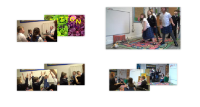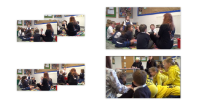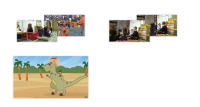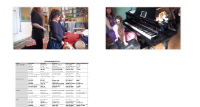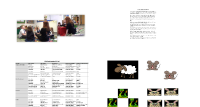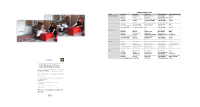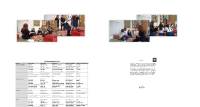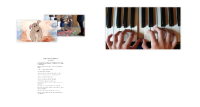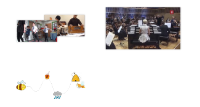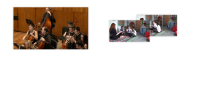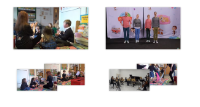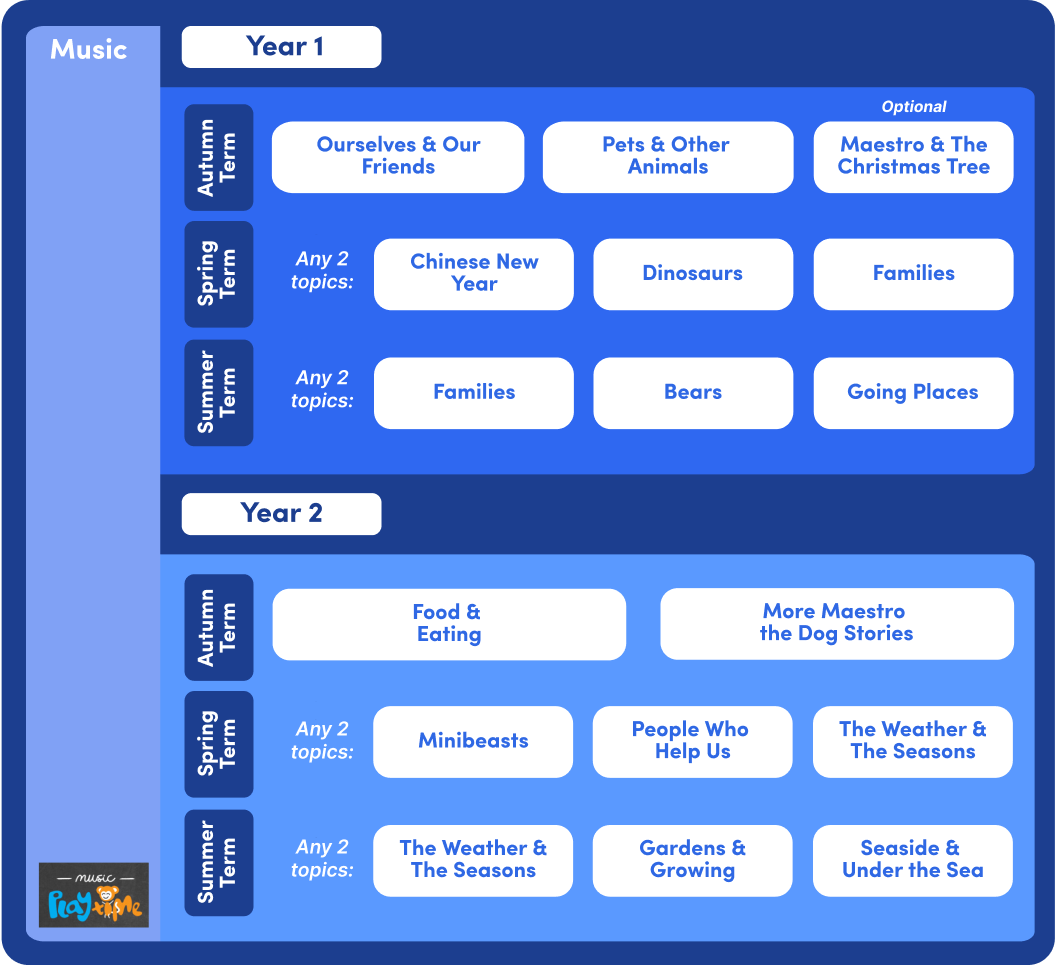Food & Eating Level: Key Stage 1
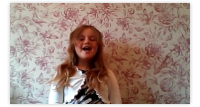
Ten Green Bottles
Holly is singing this song for you!
Two Keeping the Pulse Activities
Mud Pie Chant (tapping the pulse)
This is a rhythmical chant for tapping the pulse on knees while sitting in a circle. You'll need to give a strong lead to model how to do this, making big movements with your own hands.
Of course, making mud pies afterwards is compulsory!
- Two little children, big brown eyes
- Two little children making mud pies
- Muddy little hands and muddy little feet
- Making mud pies is a very special treat
- Pop them in the oven, bake them till they’re brown
- Our mud pies are the best in town
- Ask the other children, 'Won’t you come to tea -
- To eat the finest pies in the whole country?'

Shopping (walking in time, structure)
Before the game starts, set several fruits out on a table (or in a toy shop if you have one). The teacher holds picture cards that match the fruits eg a pear and a picture of a pear (you could have the word written on the back too). This is marching song so encourage walking in time with the words by praising those children who can. Try walking next to those who can't, so they can copy you.
Start every verse with the children looking at you, as you hold up one of the fruit cards. Ask what the fruit is and pass the card to a child who gives the correct reply. All march around the room as you sing the shopping song using sing-song voices. During the song, the child with the card fetches that fruit and puts it into a big bag as everyone shouts PLOP! At the end of the song, wash the fruit well, cut it up and share it out.
- Shopping, shopping in the town
- Walking, walking all around
- Bought a pear from the shop
- Put it in a bag - PLOP!
- __
- Shopping, shopping in the town
- Walking, walking all around
- Bought an apple from the shop
- Put it in a bag - PLOP!
- __
- ©Music-Playtime: Arts Enterprise Limited
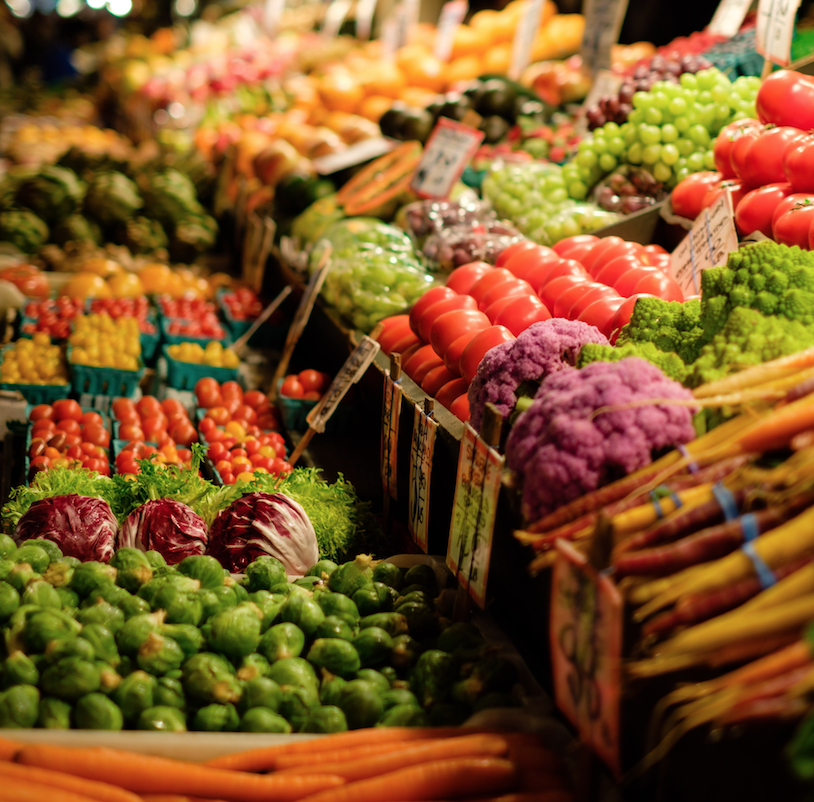
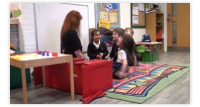
The Ice Cream Song
This song is great to go with the Creative Music section, which is also about Ice Cream!
Did you ever see a ghost eating toast?
Well here's a song about one - Mrs White had a fright in the middle of the night - saw a ghost eating toast, half way up the old lamp post!
The children can have fun making up an intro and an outro for this song, using scary sounds. The chord played here as a simple accompaniment is just two sounds played at the same time (eg D and A OR C and G), which you can easily do on chime bars or a xylophone. This two-note accompaniment is really useful for all sorts of simple songs and it's correct name is a drone.
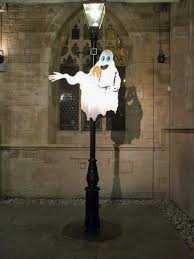
Sticky Buns (pitch)
An easy action song to teach and learn:
- Sticky Buns
- Sticky Buns
- Sometimes we eat
- Sticky Buns
It's fun to do actions to this little song. In the first three lines, the note pitches go like this: High - Low - Middle and the children could doing the actions of touching heads, knees and tums as they substitute these words:
- Heads knees tums
- Heads knees tums
- Sticky buns go (point to mouth)
- In our tums (rub tummy)
(Yes I know there's potential for the children singing 'up our bums' instead. This reminds me boy called James Farrar who, after a little 'toilet humour' joke, earnestly explained to me that he found it funny because he was ten years old.)
Extension
There are only three notes in the song so it's a good one for the children to learn to play on a keyboard, piano, chime bars or xylophone. On a keyboard or piano, use a set of three black keys in a row near the middle of the piano. On chime bars or xylophone, instead use the notes F, G and A. If you work it out yourself first (start with A F G), you'll be able to help.
You could use a drone accompaniment to this song too - the best notes would be F and C (lower pitch F and higher pitch C).
Hints:
- 1/ If using a xylophone, remove the notes that are not needed, leaving just F, G and A for playing the tune, or just F and C for the drone. This makes it much easier for the children to hit the right notes.
- 2/ For the best sound, the beater needs to bounce off the bars.
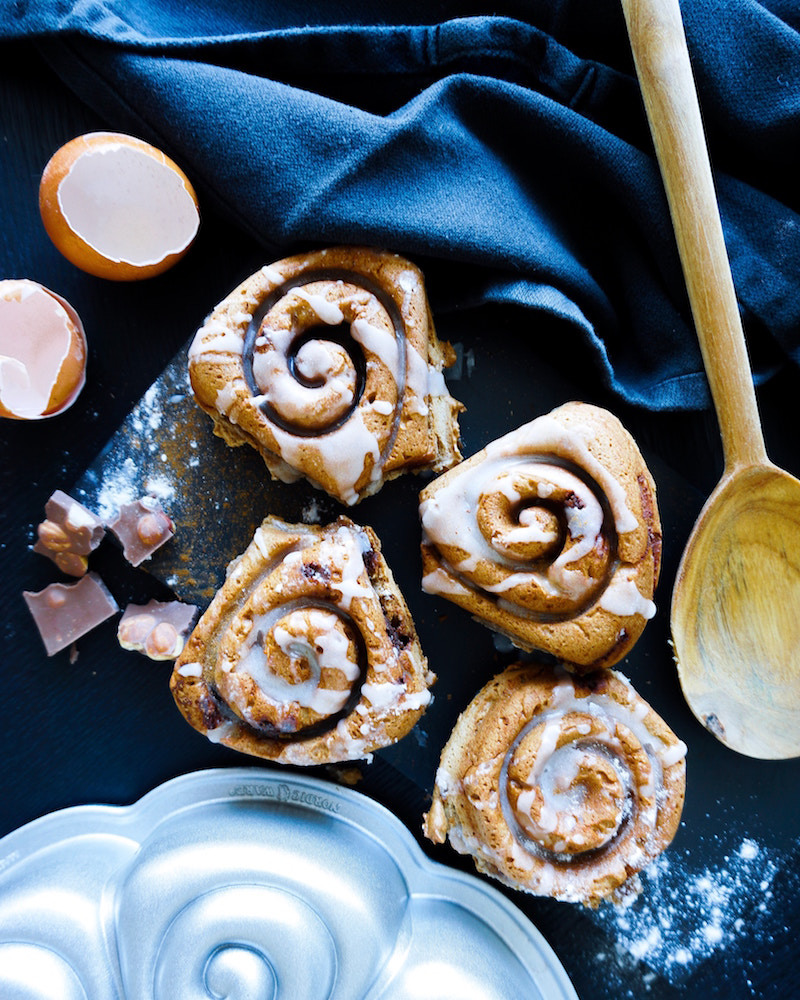
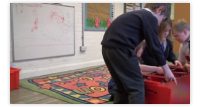
Exploring a Xylophone
In the next activity we use a xylophone. We may think it's obvious that the bigger bars on a xylophone make lower sounds but children tend to expect the opposite because their everyday understanding is that higher means louder, as in TV volume. Try allowing exploring time, in which you help the children to work out how to put the bars on in the right order.
Breakfast time! (rhythm, pulse)
Everyone chants the rhyme rhythmically, tapping the pulse on knees - sit in a circle and let the children see you tapping the pulse with big movements which they can copy.
When the chant is known, divide the class into three groups: the Cheese group, the Apple group and the Jelly group,. On the words in capitals, the children invent different movements eg big arms for cheese, little finger circles for peas, scratching for fleas, wings for bees. They rub tummies for the last line.
- It's breakfast time (tap the pulse on knees)
- With words that rhyme (tap the pulse on knees)
- How many can you say? (pretend to count on fingers)
- CHEESE and PEAS and FLEAS and BEES
- That's what we'll eat today! (rub tummies)
- __
- It's breakfast time (tap the pulse on knees)
- With words that rhyme (tap the pulse on knees)
- How many can you say? (pretend to count on fingers)
- APPLE JUICE and STRAWberry MOUSSE
- That's what we'll eat today! (rub tummies)
- __
- It's breakfast time (tap the pulse on knees)
- With words that rhyme (tap the pulse on knees)
- How many can you say? (pretend to count on fingers)
- JELLY ROAST and SLUGS on TOAST
- That's what we'll eat today! (rub tummies)
Extension - Sing and play! (pitch, texture)
1/ Next, ask the children to make up a tune to the rhyme, in pairs. If you use a xylophone, I suggest you take off all the bars except for C, D, E, G and A in a row but missing out the F: a pentatonic (five) group of notes that are easy to sing.
2/ Instead of tapping the pulse on knees, one child from each group could play an untuned instrument, (eg a drum) to accompany the singing. Ask each group to do their verse with the other children listening, then ask the listeners if the singing could be heard well enough above the instruments (this is called balancing the texture).
Extension - Make up an Intro!
First, model how you could make a simple intro to the song by clapping the rhythm of the words: Cheese and peas and fleas and bees, and have the children copy you. Then model how to play that on any instrument. Next, give everyone an instrument, some tuned and some untuned, and put the children into groups of two or three. If you have chime bars, give out two only per group: C and E, or E and G, or G and A. Each group has to make up a little intro that lasts as long as their special line, to play before their verse. Give each group a turn at showing their intro.
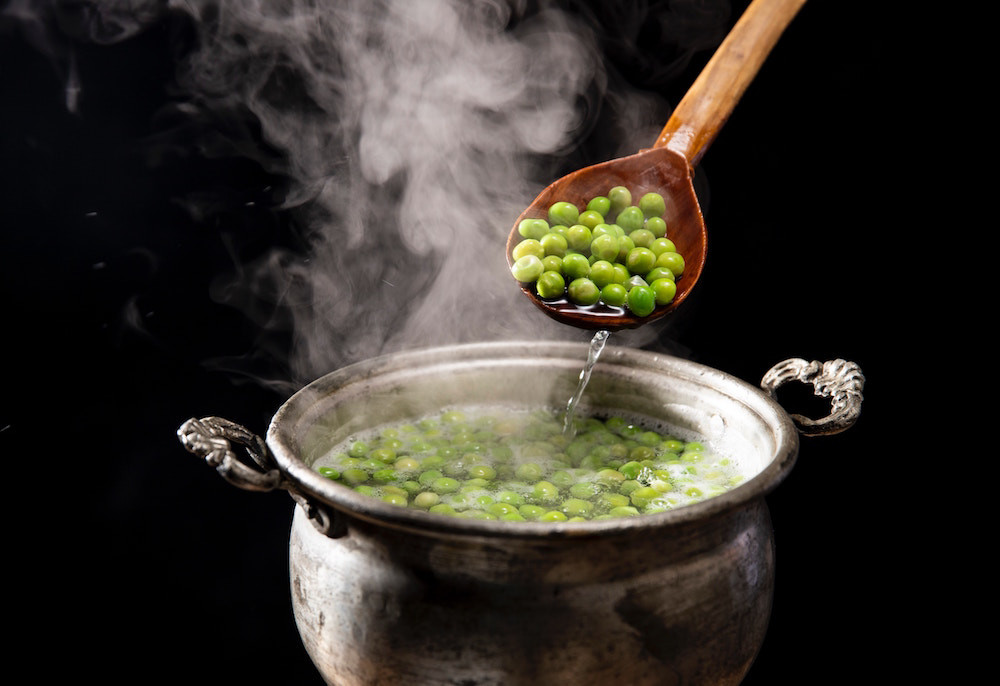
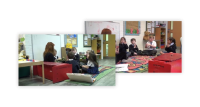
Good Day to You! (pulse, duration, rhythm)
This is a simple song that demonstrates 3 time, in which the musical pulse has a feel for going in groups of three, like a waltz. I chose it here as a precursor to the Ice Cream Machine activity because that is in 3 time too.
With actions ...
The actions demonstrate that the music is in 3 time.
Dippy Doo - the complete song
There are two parts to this song, one in 3 time and one in 2 time.
Ice Cream Machine (pulse, rhythm, texture)
Let's be an ice cream machine! I'm doing this with a small group so everyone has their own sounds to make but it works even better with a whole class, in which case you'll first divide the children into 5 groups. Each group has their own sound to which they make up an agreed action, and the teacher keeps a steady pulse by beating a drum. These are the words, to be said over and over again, without pausing at all in between words. It should go steadily like 1 2 3 1 2 3 1 2 3 ... with no gaps:
- Group 1 - BOOM boom boom
- Group 2 - RUMBLE ping ping
- Group 3 - SHHH Shhh Shhh
- Group 4 - PLOP plop plop
- Group 5 - YUM yummy yum
Suggested actions:
- Group 1 - drumming arm movements
- Group 2 - roly-poly arms on rumble and starfish hands for ping
- Group 3 - pouring the milk in
- Group 4 - plopping the ice cream into a dish
- Group 5 - rub tummy round and round
Once everyone has practised, you can have great fun doing the sounds and actions. If the children become proficient at this you can try doing more than one sound, with actions, at the same time creating a thicker texture.
Our first attempts!
Notice that the children have, broadly speaking, got the idea but they are not yet keeping a steady 3 time pulse.
Our 'Performance'
This was our final attempt of the day, our 'performance'. The pulse is much more stable here as the children begin to understand the concept better.


March Past of the Kitchen Utensils
This is the Belmont High School Chamber Orchestra with Wind Ensemble playing a piece by the composer Vaughan Williams, amusingly entitled March Past of the Kitchen Utensils! Ask the children as they listen, which part of the music is marching to the shops to buy the food (part 1), and which part is chopping, stirring and skipping around the kitchen (the middle section). The last part is like the first section; what do the children think is happening here?
Moving to the Music
The children march in time to the music, then stop and make a shape like a kitchen utensil when they hear the loud crashes (eg long like a spoon, round like a bowl). In the middle section, the children pretend to make dinner, chopping, stirring and skipping around the kitchen. They go back to marching when the original theme returns.
What's My Sound?
Show the children a range of kitchen utensils that can make a sound from each other - aim for a range of materials, shapes and sizes: eg small metal jug, big plastic bowl, wooden spoons. First let the children experiment freely with making different sounds, then hide the utensils behind a screen. The children take turns to go behind the screen and make a sound one one utensil, while the other children guess what the utensil was. You could do this as a team game if you wish.

Ice cream day!
Check whether there are dietary restrictions first. It is easy to buy dairy-free, vegan ice cream from most supermarkets.
Make up a poem (literacy link)
Green Ice Cream!
- Today I made ice cream
- With my ice cream machine
- This is what I put in it
- To make it go green ...
(children think up lots of green ingredients eg slime from a pond, leaves from a tree, green paint from school, my mum's green coat …)
End with:
- And then I ate it all –
- Mmmm!
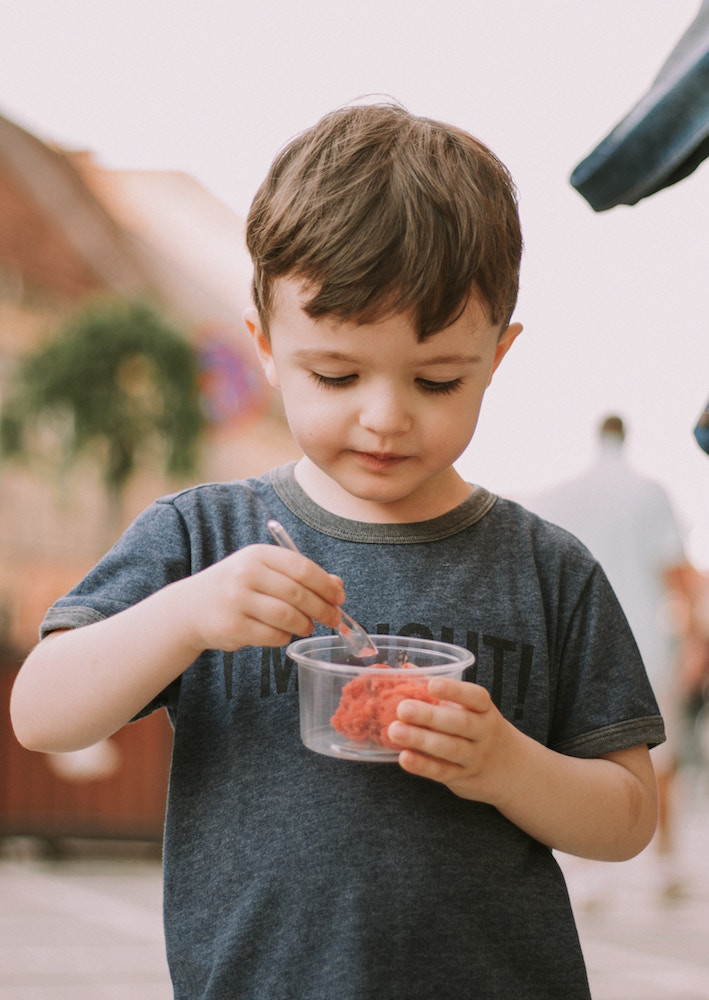
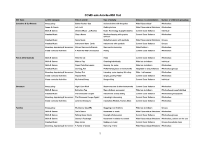

Ten Green Bottles
Holly is singing this song for you!
Two Keeping the Pulse Activities
Mud Pie Chant (tapping the pulse)
This is a rhythmical chant for tapping the pulse on knees while sitting in a circle. You'll need to give a strong lead to model how to do this, making big movements with your own hands.
Of course, making mud pies afterwards is compulsory!
- Two little children, big brown eyes
- Two little children making mud pies
- Muddy little hands and muddy little feet
- Making mud pies is a very special treat
- Pop them in the oven, bake them till they’re brown
- Our mud pies are the best in town
- Ask the other children, 'Won’t you come to tea -
- To eat the finest pies in the whole country?'

Shopping (walking in time, structure)
Before the game starts, set several fruits out on a table (or in a toy shop if you have one). The teacher holds picture cards that match the fruits eg a pear and a picture of a pear (you could have the word written on the back too). This is marching song so encourage walking in time with the words by praising those children who can. Try walking next to those who can't, so they can copy you.
Start every verse with the children looking at you, as you hold up one of the fruit cards. Ask what the fruit is and pass the card to a child who gives the correct reply. All march around the room as you sing the shopping song using sing-song voices. During the song, the child with the card fetches that fruit and puts it into a big bag as everyone shouts PLOP! At the end of the song, wash the fruit well, cut it up and share it out.
- Shopping, shopping in the town
- Walking, walking all around
- Bought a pear from the shop
- Put it in a bag - PLOP!
- __
- Shopping, shopping in the town
- Walking, walking all around
- Bought an apple from the shop
- Put it in a bag - PLOP!
- __
- ©Music-Playtime: Arts Enterprise Limited


The Ice Cream Song
This song is great to go with the Creative Music section, which is also about Ice Cream!
Did you ever see a ghost eating toast?
Well here's a song about one - Mrs White had a fright in the middle of the night - saw a ghost eating toast, half way up the old lamp post!
The children can have fun making up an intro and an outro for this song, using scary sounds. The chord played here as a simple accompaniment is just two sounds played at the same time (eg D and A OR C and G), which you can easily do on chime bars or a xylophone. This two-note accompaniment is really useful for all sorts of simple songs and it's correct name is a drone.

Sticky Buns (pitch)
An easy action song to teach and learn:
- Sticky Buns
- Sticky Buns
- Sometimes we eat
- Sticky Buns
It's fun to do actions to this little song. In the first three lines, the note pitches go like this: High - Low - Middle and the children could doing the actions of touching heads, knees and tums as they substitute these words:
- Heads knees tums
- Heads knees tums
- Sticky buns go (point to mouth)
- In our tums (rub tummy)
(Yes I know there's potential for the children singing 'up our bums' instead. This reminds me boy called James Farrar who, after a little 'toilet humour' joke, earnestly explained to me that he found it funny because he was ten years old.)
Extension
There are only three notes in the song so it's a good one for the children to learn to play on a keyboard, piano, chime bars or xylophone. On a keyboard or piano, use a set of three black keys in a row near the middle of the piano. On chime bars or xylophone, instead use the notes F, G and A. If you work it out yourself first (start with A F G), you'll be able to help.
You could use a drone accompaniment to this song too - the best notes would be F and C (lower pitch F and higher pitch C).
Hints:
- 1/ If using a xylophone, remove the notes that are not needed, leaving just F, G and A for playing the tune, or just F and C for the drone. This makes it much easier for the children to hit the right notes.
- 2/ For the best sound, the beater needs to bounce off the bars.


Exploring a Xylophone
In the next activity we use a xylophone. We may think it's obvious that the bigger bars on a xylophone make lower sounds but children tend to expect the opposite because their everyday understanding is that higher means louder, as in TV volume. Try allowing exploring time, in which you help the children to work out how to put the bars on in the right order.
Breakfast time! (rhythm, pulse)
Everyone chants the rhyme rhythmically, tapping the pulse on knees - sit in a circle and let the children see you tapping the pulse with big movements which they can copy.
When the chant is known, divide the class into three groups: the Cheese group, the Apple group and the Jelly group,. On the words in capitals, the children invent different movements eg big arms for cheese, little finger circles for peas, scratching for fleas, wings for bees. They rub tummies for the last line.
- It's breakfast time (tap the pulse on knees)
- With words that rhyme (tap the pulse on knees)
- How many can you say? (pretend to count on fingers)
- CHEESE and PEAS and FLEAS and BEES
- That's what we'll eat today! (rub tummies)
- __
- It's breakfast time (tap the pulse on knees)
- With words that rhyme (tap the pulse on knees)
- How many can you say? (pretend to count on fingers)
- APPLE JUICE and STRAWberry MOUSSE
- That's what we'll eat today! (rub tummies)
- __
- It's breakfast time (tap the pulse on knees)
- With words that rhyme (tap the pulse on knees)
- How many can you say? (pretend to count on fingers)
- JELLY ROAST and SLUGS on TOAST
- That's what we'll eat today! (rub tummies)
Extension - Sing and play! (pitch, texture)
1/ Next, ask the children to make up a tune to the rhyme, in pairs. If you use a xylophone, I suggest you take off all the bars except for C, D, E, G and A in a row but missing out the F: a pentatonic (five) group of notes that are easy to sing.
2/ Instead of tapping the pulse on knees, one child from each group could play an untuned instrument, (eg a drum) to accompany the singing. Ask each group to do their verse with the other children listening, then ask the listeners if the singing could be heard well enough above the instruments (this is called balancing the texture).
Extension - Make up an Intro!
First, model how you could make a simple intro to the song by clapping the rhythm of the words: Cheese and peas and fleas and bees, and have the children copy you. Then model how to play that on any instrument. Next, give everyone an instrument, some tuned and some untuned, and put the children into groups of two or three. If you have chime bars, give out two only per group: C and E, or E and G, or G and A. Each group has to make up a little intro that lasts as long as their special line, to play before their verse. Give each group a turn at showing their intro.


Good Day to You! (pulse, duration, rhythm)
This is a simple song that demonstrates 3 time, in which the musical pulse has a feel for going in groups of three, like a waltz. I chose it here as a precursor to the Ice Cream Machine activity because that is in 3 time too.
With actions ...
The actions demonstrate that the music is in 3 time.
Dippy Doo - the complete song
There are two parts to this song, one in 3 time and one in 2 time.
Ice Cream Machine (pulse, rhythm, texture)
Let's be an ice cream machine! I'm doing this with a small group so everyone has their own sounds to make but it works even better with a whole class, in which case you'll first divide the children into 5 groups. Each group has their own sound to which they make up an agreed action, and the teacher keeps a steady pulse by beating a drum. These are the words, to be said over and over again, without pausing at all in between words. It should go steadily like 1 2 3 1 2 3 1 2 3 ... with no gaps:
- Group 1 - BOOM boom boom
- Group 2 - RUMBLE ping ping
- Group 3 - SHHH Shhh Shhh
- Group 4 - PLOP plop plop
- Group 5 - YUM yummy yum
Suggested actions:
- Group 1 - drumming arm movements
- Group 2 - roly-poly arms on rumble and starfish hands for ping
- Group 3 - pouring the milk in
- Group 4 - plopping the ice cream into a dish
- Group 5 - rub tummy round and round
Once everyone has practised, you can have great fun doing the sounds and actions. If the children become proficient at this you can try doing more than one sound, with actions, at the same time creating a thicker texture.
Our first attempts!
Notice that the children have, broadly speaking, got the idea but they are not yet keeping a steady 3 time pulse.
Our 'Performance'
This was our final attempt of the day, our 'performance'. The pulse is much more stable here as the children begin to understand the concept better.


March Past of the Kitchen Utensils
This is the Belmont High School Chamber Orchestra with Wind Ensemble playing a piece by the composer Vaughan Williams, amusingly entitled March Past of the Kitchen Utensils! Ask the children as they listen, which part of the music is marching to the shops to buy the food (part 1), and which part is chopping, stirring and skipping around the kitchen (the middle section). The last part is like the first section; what do the children think is happening here?
Moving to the Music
The children march in time to the music, then stop and make a shape like a kitchen utensil when they hear the loud crashes (eg long like a spoon, round like a bowl). In the middle section, the children pretend to make dinner, chopping, stirring and skipping around the kitchen. They go back to marching when the original theme returns.
What's My Sound?
Show the children a range of kitchen utensils that can make a sound from each other - aim for a range of materials, shapes and sizes: eg small metal jug, big plastic bowl, wooden spoons. First let the children experiment freely with making different sounds, then hide the utensils behind a screen. The children take turns to go behind the screen and make a sound one one utensil, while the other children guess what the utensil was. You could do this as a team game if you wish.

Ice cream day!
Check whether there are dietary restrictions first. It is easy to buy dairy-free, vegan ice cream from most supermarkets.
Make up a poem (literacy link)
Green Ice Cream!
- Today I made ice cream
- With my ice cream machine
- This is what I put in it
- To make it go green ...
(children think up lots of green ingredients eg slime from a pond, leaves from a tree, green paint from school, my mum's green coat …)
End with:
- And then I ate it all –
- Mmmm!


